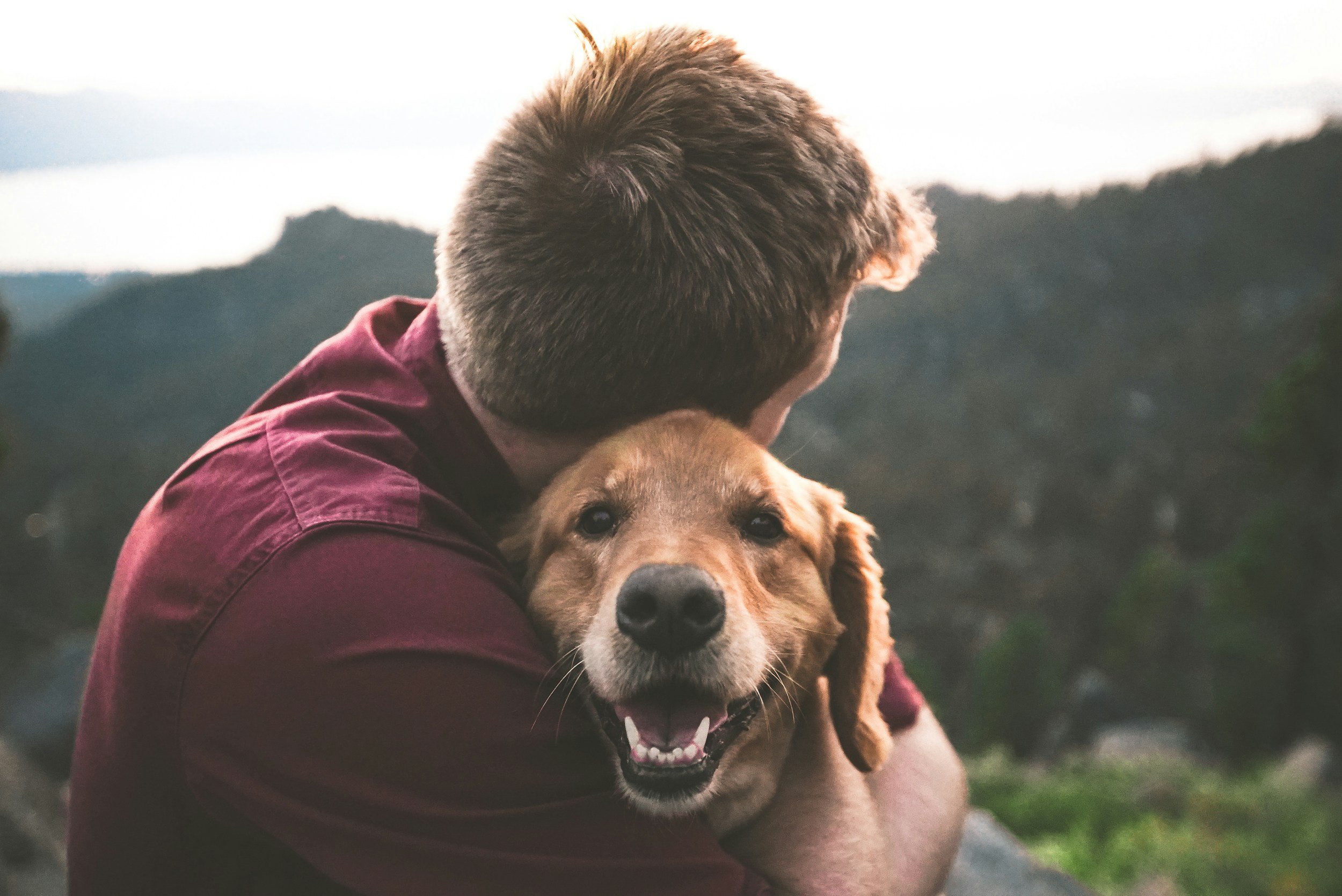
Emotional Preparedness: How to Navigate Guilt and Grief
Losing a beloved companion animal is one of the most difficult experiences a pet owner will face. Whether through natural passing, euthanasia, or a sudden event such as an accident, the loss is likely to leave a lasting impression on a person. The loss of an animal is accompanied by aftercare decisions such aquamation, burial, or cremation as well; this can call-forth emotions such as guilt and grief which can feel overwhelming. While these feelings are natural, it’s important to recognize that saying “goodbye” and letting go are both acts of love for yourself and for your animal.

Balancing Medical Treatment and Compassionate Care
Understanding “How to Know When It’s Time to Say Goodbye to a Pet” is no easy task; it is complex and the added role of emotions can increase the intensity of the experience. Some people believe in “better a week early than a day late” on the topic, while others want every minute possible with their animal companions. We’re not here to pass judgement on your philosophical approach, but Eternal Tides will remain ready to assist in the difficult aspects of that inevitable “goodbye.”

The Role of Your Veterinarian: Making Informed Decisions
As we explore the theme of “How to Know When It’s Time to Say Goodbye to a Pet,” we turn to our community of skilled professionals. In cases such as people choosing plan-ahead servicesas well as when losing a friend is a total surprise, I get asked often about what to look for and/or what was missed. Perhaps this article might help craft your next conversation with your animal’s healthcare provider.

Recognizing the Signs: When Your Pet’s Quality of Life Changes
The nature of Eternal Tides’ business is forever tried to inevitable “bad days” for people who love their animals. For some people, the end comes quickly and without much warning; others endure a slow march with different signs of declining health and comfort. Hard is hard… regardless of how it comes, losing a friend is hard. In this series, I aim to explore the theme of “How to Know When It’s Time to Say Goodbye to a Pet.”

The Power of Space in Community Healing (part 6 of 6)
Stewardship of life extends beyond our relationships with animals—it includes our responsibility to the planet. Traditional cremation releases carbon emissions and particulate matter, contributing to environmental degradation (Herring, 2020). Aquamation, an eco-conscious alternative, aligns with the values of pet owners who seek a final act of care that respects both their beloved companions and the earth. As awareness grows, communities that embrace aquamation set new standards for sustainable aftercare.

Beyond Four Walls: Extending Support Through Aftercare (part 5 of 6)
Environmental psychologist Kaplan (1995) suggests that restorative environments—places that encourage reflection and emotional renewal—extend beyond structured spaces into nature and personal rituals. This idea informs our approach at Eternal Tides, where we encourage families to create their own remembrance practices, whether by scattering “cremains” (ashes) in a meaningful location, planting a memorial garden, or crafting personal tributes. These acts transform grief into an ongoing relationship with memory.

How Space Supports Grief Processing (part 4 of 6)
According to color psychology, different hues evoke different emotional responses. Soft greens, blues, and yellows, for example, have been shown to create a calming effect, reduce stress, and promote emotional healing (Elliot & Maier, 2014). While different hues of colors create different feelings from different audiences, often influenced by context and culture, one can often come to agreement with others about shared interpretations of colors

The Role of Space in Remembrance (part 3 of 6)
The role of space in remembrance is not just about location but about intention. As Yi-Fu Tuan (1977) noted, a place becomes meaningful when infused with experience. That is why our Memorial Space is more than a room—it is a sanctuary where pet owners can pause, reflect, and celebrate a lifetime of companionship.

Creating a Healing Environment: Intention and Purpose (Part 2 of 6)
At Eternal Tides, our Memorial Space and Comfort Room are more than locations for final goodbyes. They are intentionally designed spaces that support grieving pet owners, transforming loss into remembrance. Research in environmental psychology suggests that healing spaces incorporate natural elements, gentle lighting, and thoughtful design to promote emotional well-being.

Beyond a Place: How Space Shapes the Grieving Process (Part 1 of 6)
Grief is a deeply personal journey, shaped by emotion, memory, and environment. When we lose a beloved pet, the spaces where we say goodbye, reflect, and heal can profoundly impact our ability to process loss. Inspired by the work of philosopher Michel de Certeau, who distinguished between "place" (a physical location) and "space" (a meaningful environment shaped by movement and interaction), we understand that grief does not simply unfold in a place—it transforms within a space.

The Ripple Effect: When One Compassionate Choice Inspires Another
From the generosity of organized giving days in the community to the ongoing stewardship of pet owners providing care through every stage of life, these choices shape a more compassionate world. Thoughtful end-of-life decisions for pets, such as choosing aquamation or donating supplies to shelters, are not just final acts of love; they set an example for others, reinforcing a culture of care and responsibility. Studies show that witnessing generosity encourages people to engage in similar behaviors, creating a chain reaction of kindness

Giving Back in Goodbye: How Pet Aftercare Reflects Generosity
Pet aftercare is more than a practical decision; it’s an opportunity to give back, both to our companions and to the world around us. By selecting ethical and sustainable aftercare options, pet guardians can ensure their final act of stewardship reflects the same generosity they showed throughout their pet’s life. Thoughtful decisions, such as aquamation over traditional cremation or donating to organizations that support pet loss resources, allow families to turn grief into an act of kindness

A Final Act of Love: Honoring Pets Through Thoughtful End-of-Life Choices
End-of-life care decisions, from veterinary support to aftercare options, allow pet owners to ensure their animal’s final moments are filled with comfort, dignity, and peace. Thoughtful planning—whether it’s choosing in-home euthanasia, selecting a sustainable aftercare method like aquamation, or creating a meaningful farewell—can provide closure and honor a pet’s lasting impact.

The Heart of Animal Stewardship: Caring for Pets Through Every Stage of Life
Welcoming a pet into your home is more than an adoption—it’s a lifelong commitment. From the first wobbly steps of a puppy or kitten to the gentle pace of an aging companion, animal stewardship means providing love, care, and thoughtful decision-making at every stage of life. True stewardship extends beyond food, shelter, and routine vet visits. It means planning for a pet’s future, anticipating medical needs, and making ethical choices that align with both their well-being and our values.

Giving Hearts, Giving Hope: How Our Community Supports Animals in Need
Every year, the Fargo-Moorhead community comes together for Giving Hearts Day, a powerful 24-hour fundraising event that supports hundreds of local nonprofits. Since its inception in 2008, this annual day of giving has raised millions of dollars to strengthen organizations that provide vital services—including those dedicated to the well-being of animals. The spirit of generosity is one of the best parts of the region.

Listen to Your Heart, Not Your Habits
In the FM area, pets are often cherished as family. We adopt thousands of cats and dogs every year; we buy them food, take them to veterinarians, groom them, walk them, and love them. Which makes saying “goodbye” often quite difficult and the end-of-life choices we make for them carry deep emotional weight. Many of us default to familiar practices in high-stress times, such as choosing flame-based cremation, because we feel more comfortable what is known compared to what is new. But, as many people’s values shift toward sustainability, perhaps it’s worth asking: Are our habits aligned with our hearts?

Love and Legacy: Honoring Pets with Meaningful Decisions
For many of us, pets are more than companions—they are family. When their time with us comes to an end, the choices we make for their aftercare not only reflect our love but also leave a legacy of how we honor the bond we shared. In Fargo, North Dakota, where pet owners seek compassionate solutions, these decisions are an opportunity to merge love with meaningful action.
Flame-based “traditional” pet cremation is a familiar choice, offering closure through memorialization. Yet, as more people explore environmentally conscious options, aquamation is emerging as a thoughtful alternative. This water-based process mirrors the natural decomposition of life, using far less energy and producing minimal emissions compared to cremation. According to research by Bartley et al. (2020), aquamation consumes only one-tenth the energy of fire-based cremation, reducing the environmental impact while offering the same opportunity to honor your pet’s memory.

The Heart of Sustainability: Small Changes, Big Impact
Flame-based “traditional” cremation, while widely used, has a notable environmental impact. Data varies, but estimates range between 80-230 lbs of CO₂ are released into the atmosphere with each animal cremation; assuming 155 lbs of CO₂ per animal (average) coupled with the data-driven estimate of 8,000 annual deaths of dogs and cats in the Fargo-Moorhead area, that could result in 124,000 lbs of CO₂ emissions from pet cremation just in our region every year. On a national (US) level, more than 350,000 tons of CO₂ are emitted by the pet cremation industry in the United States (Environmental Protection Agency, 2023). These emissions add to the already significant carbon footprint of pet ownership.

Breaking the Mold: Rethinking Pet Aftercare Choices
Challenging the status quo can feel daunting, especially when grief is involved. According to research on decision-making, we tend to rely on familiar patterns when under stress or emotional strain (Kahneman, 2011). In these moments, breaking free from habit requires courage and a willingness to explore alternatives that may better reflect our values and priorities. One such alternative is aquamation - a sustainable alternative to flame-based cremation for pets in the Fargo area.

The Comfort of Routine: Why We Cling to Familiar Habits
Convenience euthanasia doesn’t exist in a vacuum; it is deeply influenced by societal attitudes toward pets, responsibility, and ethics. In many cultures, pets are considered family members, and the expectation is that owners will go to great lengths to provide for their care. However, these expectations may clash with the realities of life, such as financial hardship, limited resources, or the overwhelming challenge of managing a pet with severe behavioral issues. Research shows that judgment from peers or online communities often exacerbates feelings of guilt among owners facing such decisions, further isolating them in their grief
